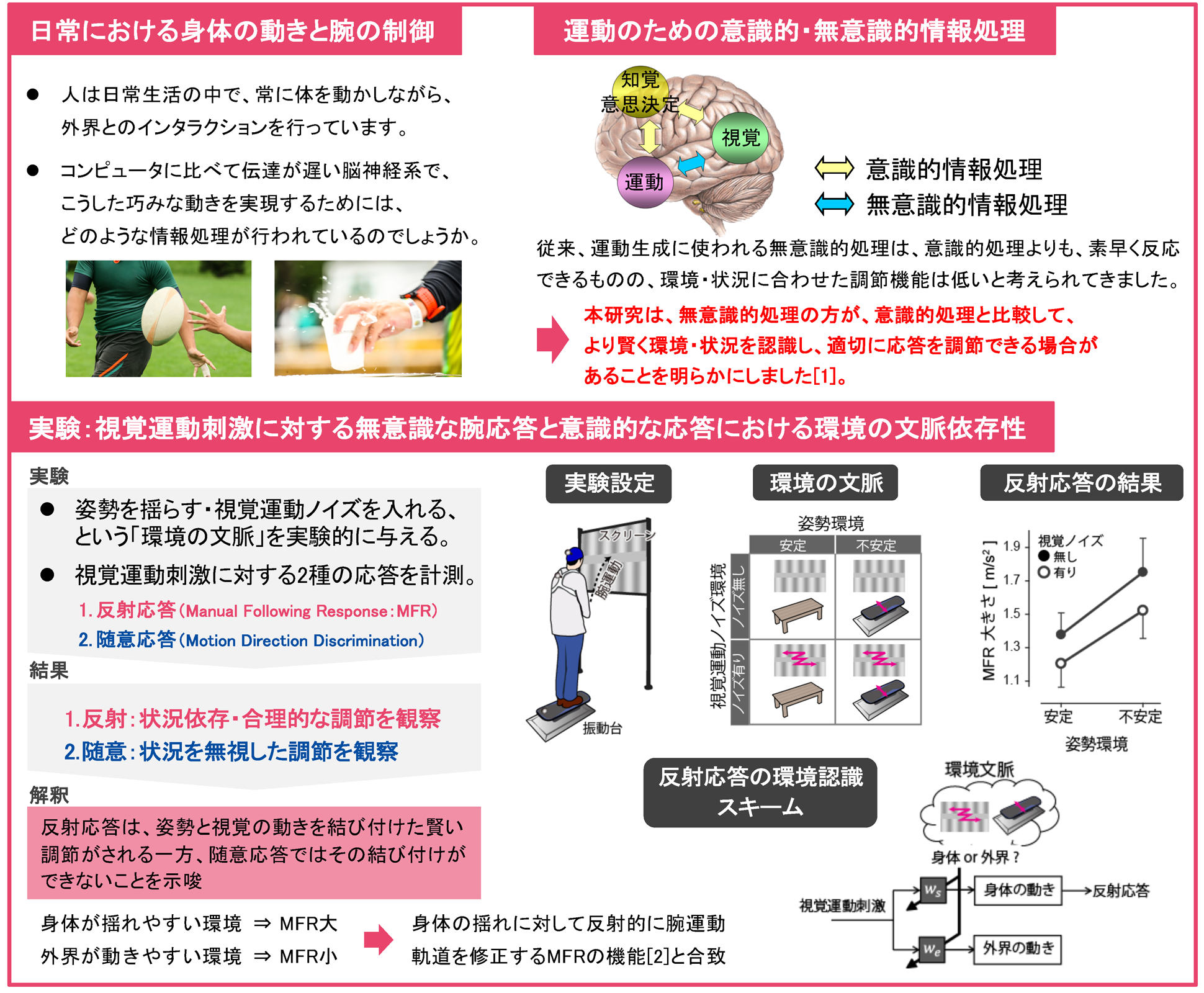研究展示
人間の科学
31
意識より賢い無意識
環境に応じた顕在・潜在的視覚運動応答の調節
どんな研究
人間が複雑で多彩な動きを行うことができるのは、外界の状況を理解し、意識的に運動を制御する情報処理能力が高いからであると考えがちです。しかし実は、巧みな運動は無意識的に制御されている部分も多く、どのような情報処理が無意識に行われているかを明らかにしていくことを試みています。
どこが凄い
姿勢安定性や視覚ノイズが異なる環境下で、視覚運動刺激に対して素早く対応する能力を随意・反射応答について調べたところ、状況に適した調節ができるのは反射応答のみであることを発見しました。このことは、無意識的処理が意識的処理よりも状況適応能力が高い場合があることを示唆しています。
めざす未来
感覚運動系における意識的情報処理と無意識的情報処理の異なる点を明らかにすることで、脳の情報処理のさらなる解明、通信・マンマシンインタフェースのデザイン、アスリートのトレーニングなどに活かしていくことをめざします。
関連文献
- N. Abekawa, H. Gomi, “Modulation difference in visuomotor responses in implicit and explicit motor tasks depending on postural stability,” in Proc. The Society for Neuroscience 47th Annual Meeting, 2017.
- H. Gomi, K. Kadota, N. Abekawa, “Dynamic reaching adjustment during continuous body perturbation is markedly improved by visual motion,” in Proc. The Society for Neuroscience 40th Annual Meeting, 2010.
ポスター
展示説明ムービー
動画の公開は終了いたしました。ご了承くださいますようお願いいたします。
関連コンテンツ
MFR説明映像
» 視野の動きによる運動誘発現象
関連文献
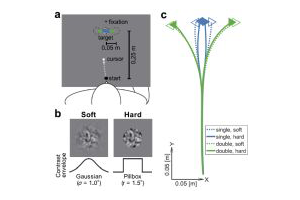
[1] H. Ueda, N. Abekawa, S. Ito, and H. Gomi, “Distinct temporal developments of visual motion and position representations for multi-stream visuomotor coordination,” Scientific Reports, vol. 9, p. 12104, Aug. 2019, doi: 10.1038/s41598-019-48535-0.
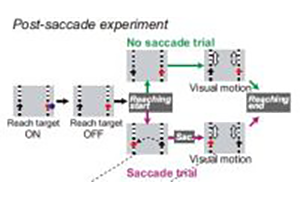
[2] N. Abekawa and H. Gomi, “Online gain update for manual following response accompanied by gaze shift during arm reaching,” J Neurophysiol, vol. 113, no. 4, pp. 1206-16, Feb. 2015, doi: 10.1152/jn.00281.2014 10.1152/jn.00281.2014.
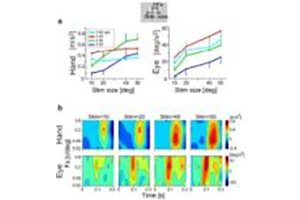
[3] H. Gomi, N. Abekawa, and S. Shimojo, “The hand sees visual periphery better than the eye: motor-dependent visual motion analyses,” The Journal of Neuroscience, vol. 33, no. 42, pp. 16502-9, Oct. 2013, doi: 10.1523/jneurosci.4741-12.2013 10.1523/JNEUROSCI.4741-12.2013.
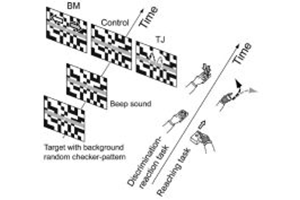
[4] K. Kadota and H. Gomi, “Implicit visuomotor processing for quick online reactions is robust against aging,” J Neurosci, vol. 30, no. 1, pp. 205-9, Jan. 2010, doi: 10.1523/JNEUROSCI.2599-09.2010.
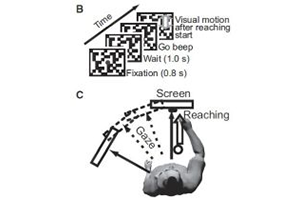
[5] N. Abekawa and H. Gomi, “Spatial coincidence of intentional actions modulates an implicit visuomotor control,” Journal of Neurophysiology, vol. 103, no. 5, pp. 2717-27, undefined 2010, doi: 10.1152/jn.91133.2008.
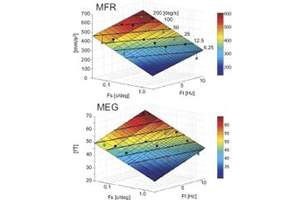
[6] K. Amano, T. Kimura, S. Nishida, T. Takeda, and H. Gomi, “Close similarity between spatiotemporal frequency tunings of human cortical responses and involuntary manual following responses to visual motion,” Journal of Neurophysiology, vol. 101, no. 2, pp. 888-97, Feb. 2009, doi: 10.1152/jn.90993.2008.
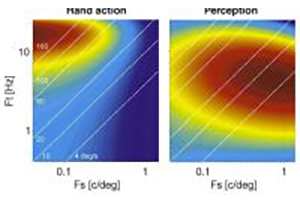
[7] H. Gomi, “Implicit online corrections of reaching movements,” Current Opinion In Neurobiology, vol. 18, no. 6, pp. 558-64, Dec. 2008, doi: 10.1016/j.conb.2008.11.002.
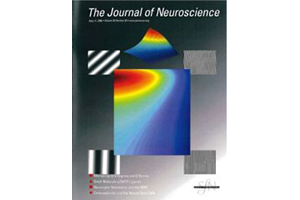
[8] H. Gomi, N. Abekawa, and S. Nishida, “Spatiotemporal tuning of rapid interactions between visual-motion analysis and reaching movement,” The Journal of Neuroscience, vol. 26, no. 20, pp. 5301-5308, May 2006, doi: 10.1523/JNEUROSCI.0340-06.2006.
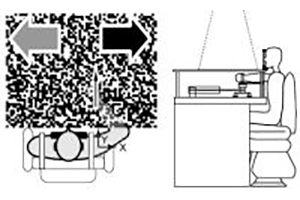
[9] N. Saijo, I. Murakami, S. Nishida, and H. Gomi, “Large-field visual motion directly induces an involuntary rapid manual following response,” The Journal of Neuroscience, vol. 25, no. 20, pp. 4941-4951, May 2005, doi: 10.1523/JNEUROSCI.4143-04.2005.
連絡先
五味 裕章 (Hiroaki Gomi) 人間情報研究部 感覚運動研究グループ
Email:
Email:





